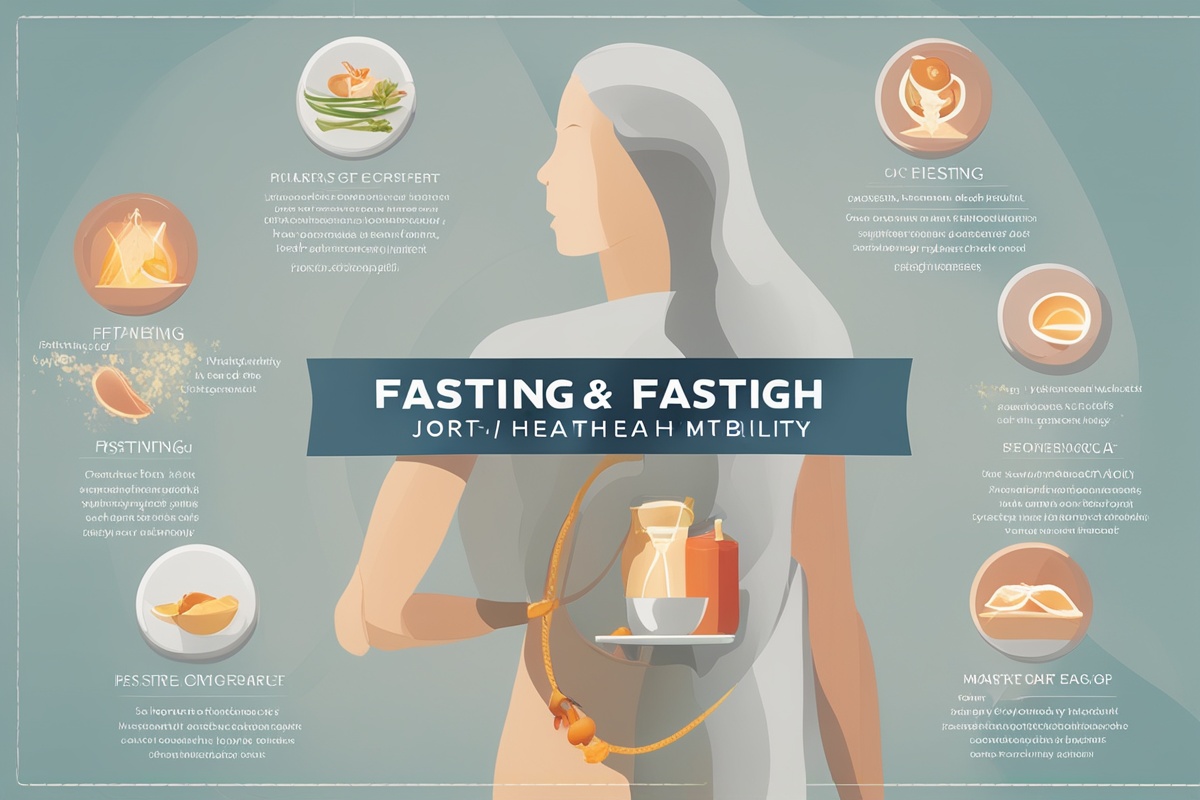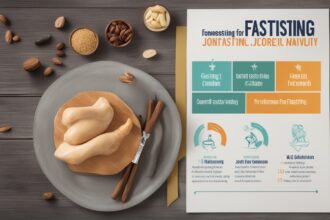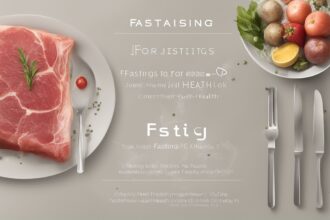Hey there, health enthusiasts! If you’re exploring ways to support your joint health naturally, you’ve probably stumbled upon the concept of fasting. fasting, a practice rooted in ancient traditions, is gaining modern attention for its potential benefits beyond weight loss—including improving joint function and reducing inflammation. Whether you’re dealing with arthritis, stiffness, or just want to keep your joints in tip-top shape, fasting might be worth considering. In this post, I’ll dive deep into how fasting can support joint health, share actionable fasting tips, and break down the science behind it. Let’s explore how taking a break from food could give your joints a much-needed break too!
What Is fasting, and How Does It Relate to Joint Health?
The Science Behind fasting and Joint Health
Joint health issues often stem from chronic inflammation, oxidative stress, and wear-and-tear on cartilage. Fasting triggers a process called autophagy, where the body recycles damaged cells and reduces inflammation at a cellular level (Bagherniya et al., 2018). Studies have shown that fasting can lower levels of pro-inflammatory markers like C-reactive protein (CRP), which are often elevated in joint conditions (Faris et al., 2012). Additionally, fasting promotes ketosis—a metabolic state where the body burns fat for fuel—potentially reducing the stress on joints caused by excess body weight (Paoli et al., 2019). While research is still evolving, these mechanisms suggest that fasting could be a powerful tool for managing joint pain and supporting long-term mobility.
Types of Fasting to Support Joint Health
Not all fasting methods are created equal, and choosing the right one depends on your lifestyle and health goals. Here are a few approaches that might benefit joint health, along with some fasting tips to make them work for you:
- Intermittent Fasting (16/8 Method): Fast for 16 hours and eat during an 8-hour window. This method is beginner-friendly and may help reduce inflammation over time.
- 5:2 Fasting: Eat normally for five days and restrict calories to 500–600 on two non-consecutive days. This can support weight loss, easing joint stress.
- Prolonged Fasting: Fasting for 2–5 days under medical supervision. This may enhance autophagy and repair mechanisms but isn’t for everyone.
- Time-Restricted Eating: Limit eating to a 10–12 hour window daily. It’s a gentle way to start fasting while still supporting metabolic health.
Before jumping into any fasting regimen, especially for joint health, consult with a healthcare provider to ensure it’s safe for your specific condition.
Practical Fasting Tips for Joint Health
Starting a fasting journey can feel daunting, but with the right fasting tips, you can ease into it while maximizing benefits for your joints. I’ve put together some actionable advice based on both research and real-world experience to help you succeed:
- Stay Hydrated: Dehydration can worsen joint stiffness, so drink plenty of water during fasting periods. Herbal teas or black coffee (no sugar) are also great options.
- Break Your Fast Gently: After fasting, avoid heavy, inflammatory foods like processed carbs or fried items. Opt for nutrient-dense meals with anti-inflammatory foods like salmon or leafy greens.
- Pair Fasting with Light Movement: Gentle exercises like yoga or walking during fasting can support joint mobility without overtaxing your body (Hunter & Eckstein, 2009).
- Listen to Your Body: If you feel dizzy or fatigued, scale back. Fasting shouldn’t cause distress, especially if you have a chronic joint condition.
- Supplement Smartly: Consider electrolytes or bone broth during longer fasts to maintain mineral balance, which is crucial for joint health.
These fasting strategies can help you avoid common pitfalls and ensure you’re supporting your joints rather than stressing them further. Remember, consistency is key—start small and build up as your body adapts.
Potential Risks and Precautions When Fasting for Joint Health
While fasting offers promising benefits, it’s not a one-size-fits-all solution. For individuals with joint conditions like rheumatoid arthritis, fasting could sometimes trigger flare-ups if not done carefully. Additionally, prolonged fasting without proper nutrition can lead to muscle loss, which might destabilize joints (Trepanowski & Bloomer, 2010). If you’re on medications for arthritis or other conditions, fasting could interfere with their efficacy, so always check with your doctor. Those with a history of eating disorders or low blood sugar should also approach fasting cautiously. The goal is to enhance joint health, not compromise it, so tailor your fasting plan to your unique needs with professional guidance.
How to Combine Fasting with Other Joint-Friendly Habits
Fasting is just one piece of the puzzle when it comes to joint health. To amplify its effects, consider integrating it with other supportive habits. For instance, maintaining a healthy weight through mindful eating post-fast can reduce mechanical stress on joints like knees and hips (Messier et al., 2013). Anti-inflammatory diets rich in omega-3 fatty acids, turmeric, and berries can complement fasting’s inflammation-reducing effects. Regular low-impact activities, such as swimming or stretching, also keep joints flexible without strain. By combining these practices with fasting tips tailored to your routine, you create a holistic approach to joint wellness that’s sustainable and effective.
In wrapping up, fasting for joint health offers a fascinating blend of ancient wisdom and modern science. From reducing inflammation through autophagy to easing the load on joints via weight management, the potential benefits are hard to ignore. By starting with simple fasting tips—like staying hydrated, choosing the right fasting method, and pairing it with gentle movement—you can explore this practice safely and effectively. Of course, it’s not a magic bullet, and individual results vary, so always prioritize personalized advice from healthcare professionals. I hope this guide has inspired you to consider fasting as part of your joint health toolkit. Have you tried fasting for joint pain or stiffness? Drop your experiences or questions in the comments—I’d love to hear from you!
References
- Bagherniya, M., Butler, A. E., Barreto, G. E., & Sahebkar, A. (2018). The effect of fasting or calorie restriction on autophagy induction: A review of the literature. Ageing Research Reviews, 47, 183–197.
- Faris, M. A., Kacimi, S., Al-Kurd, R. A., Fararjeh, M. A., Bustanji, Y. K., Mohammad, M. K., & Salem, M. L. (2012). Intermittent fasting during Ramadan attenuates proinflammatory cytokines and immune cells in healthy subjects. Nutrition Research, 32(12), 947–955.
- Hunter, D. J., & Eckstein, F. (2009). Exercise and osteoarthritis. Journal of Anatomy, 214(2), 197–207.
- Longo, V. D., & Mattson, M. P. (2014). Fasting: Molecular mechanisms and clinical applications. Cell Metabolism, 19(2), 181–192.
- Messier, S. P., Mihalko, S. L., Legault, C., Miller, G. D., Nicklas, B. J., DeVita, P., … & Loeser, R. F. (2013). Effects of intensive diet and exercise on knee joint loads, inflammation, and clinical outcomes among overweight and obese adults with knee osteoarthritis. JAMA, 310(12), 1263–1273.
- Paoli, A., Bosco, G., Camporesi, E. M., & Mangar, D. (2019). Ketosis, ketogenic diet and food intake control: A complex relationship. Frontiers in Psychology, 10, 27.






